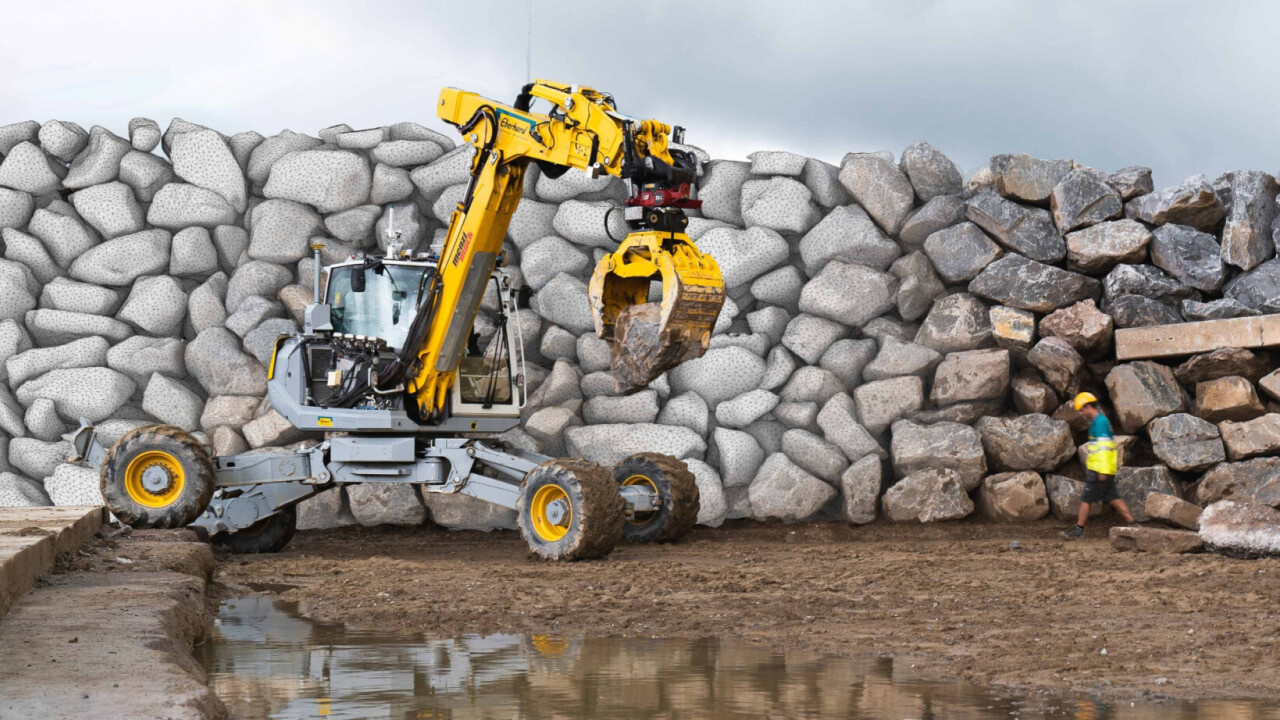
Construction is a tough job, and in Europe there is a chronic shortage of workers to build the homes, schools, and roads we use every single day. So why not get a robot to do the hard work so we don’t have to?
That’s exactly what researchers at ETH Zurich’s Robotic Systems Lab in Switzerland are working on. They’ve trained an autonomous excavator to construct stone walls using boulders weighing several tonnes — without any human interference. In the machine’s first assignment, it built a six metre-high and 65 metre-long loading bearing wall. If scaled, the solution could to pave the way for faster, more sustainable construction.
Using LiDAR sensors, the excavator autonomously draws a 3D map of the construction site and identifies existing building blocks and stones for the wall. Specifically designed tools and machine vision (the ability of a computer to see) enable the excavator to scan and grab large stones in its immediate environment. It can also register their approximate weight as well as their centre of gravity.
An algorithm then determines the best position for each stone, and the excavator places each piece in the desired location to within a centimetre of accuracy. The autonomous machine can place 20 to 30 stones in a single consignment — about as many as one delivery could supply.

The digger, named HEAP, is a modified Menzi Muck M545 developed by the researchers to test the potential of autonomous machines for construction. Because HEAP is so precise, it opens up the possibility of using locally sourced stones and rubble for the construction of walls, instead of new material like bricks.
The wall was constructed at an industrial park next to Zurich Airport, managed by Eberhard construction company. The firm is using the site, and various ETH Zurich technologies, to demonstrate ways to make construction more circular — by minimising waste to the greatest extent possible.
Automation more complex in construction environments
The use of autonomous diggers has been on the cards for a while now, not just in Switzerland. In 2017, US startup Built Robotics was founded to bring robot diggers into the mainstream. At the time, CEO Noah Ready-Campbell predicted that fully autonomous equipment would become commonplace on construction sites before fully autonomous cars hit public roads. But the idea has yet to advance beyond the prototype stage.
Automation is easiest to implement on repetitive tasks with predictable outcomes — like in manufacturing assembly lines. But a construction site is a complex, messy environment where safety if paramount. Similar to autonomous cars, the world is simply not yet ready for the widespread deployment of autonomous diggers, cranes, and trucks.
However, there are other applications of robotics technologies in construction that are being implemented right now. For instance, UK startup hyperTunnel combines swarm robotics and AI to excavate tunnels up to 10 times faster than conventional methods. The proposed process involves injecting the lining of a tunnel into the ground and then removing the waste using a swarm of small autonomous robotic vehicles.
Another area of rapid growth is the construction of homes using giant 3D printers, like those developed by Danish company COBOD. In the UK, a 36-home housing development is currently being built this way. Its proponents claim the huge robots will build the homes faster, safer, and more sustainably than traditional methods.
Get the TNW newsletter
Get the most important tech news in your inbox each week.




